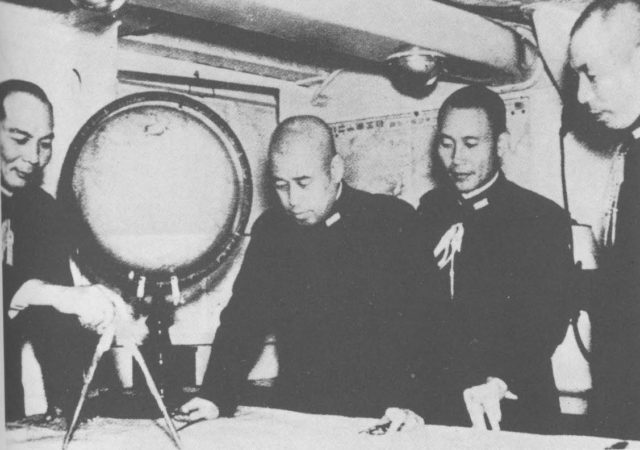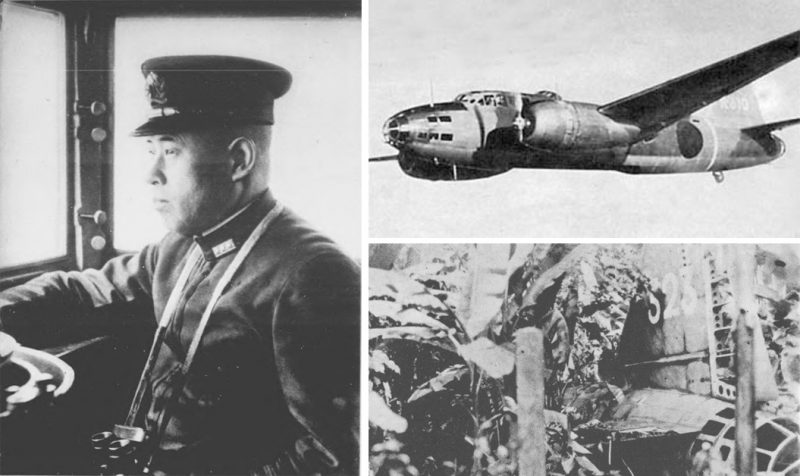Dick Portillo is known to Chicago residents as the hot dog and Italian beef king of Chicago. He is the founder of the Portillo’s fast food chain which he sold two years ago for a reported $1 billion.
While on a trip to Papua New Guinea in 2015, at the spot where Japanese naval commander Isoroku Yamamoto’s plane was shot down during World War II, a gold tooth surfaced in the mud at that location and Portillo found it.
The tooth was confiscated by the local clan that owns the site. They later returned it to Portillo in exchange for $14,000.
“If it comes to be true, it’s peanuts compared to the value that I would look at,” Portillo told the Chicago Tribune. “If it doesn’t, you win some and you lose some.”
Yamamoto is a legendary hero in Japan. Although he opposed going to war with the US, he planned the successful attack on Pearl Harbor which led to the United States’ entry into the war.
When his plane was shot down by US pilots in 1943, his death struck a critical blow against the Japanese. It was a critical turning point in the war.
Portillo is working to authenticate the tooth. He is working with research librarians and dentists. Friends of his are reaching out to experts in Asia.
“I’ll do whatever it takes to find out,” said Portillo.
Yukoh Watanabe is a Japanese historian that published a book on Yamamoto in 2015. He points out that there were others on the plane with Yamamoto. He said that it is unclear whether dental records exist for the commander.

“I have to say that there is a small possibility it belonged to Admiral Yamamoto,” Watanabe wrote in an email to the newspaper, and he added: “I also hope the gold tooth belongs to Admiral Yamamoto.”
Portillo, 76, is a former Marine who served during peacetime. He has always had a fascination with World War II, especially the Pacific Theater. He had organized five trips to significant historic sites in the region.
On one trip, in 2015, they explored the wreck of the plane that was shot down with Yamamoto in it. Anderson Giles, a retired professor and documentarian, crawled through the left side of the plane when he noticed a glint in the mud, reached down, and pulled up the tooth.
He recalled that Yamamoto had sat on the left side of the plane, that his body had been recovered on the left side of the plane and that he had a wound from a large-caliber round in his jaw.
“That’s what caused the bells to ring in my mind,” Giles said.
Portillo had to fund a second trip to the region after the tooth was confiscated by the leader of the clan that owns the wreckage.
Patricia Trowbridge, who was on the 2015 trip, purchased the tooth from the clan for $14,000.
Yamamoto had ties to US and Chicago specifically. He studied at Harvard from 1919 – 1921. While he was there, he became an obsessive and masterful poker player. One historian states that he used his poker winnings to support himself on a hitchhiking trip through the US.
From 1926 – 1928, he was a Japanese Navy attaché in Washington DC. He was known to gamble with US military members there.
He was a voice for moderation during the run-up to World War II according to Ian W. Toll, author of two books on the Pacific during WWII. Yamamoto warned that the US industrial complex was formidable. He predicted that the Japanese would lose the war if it lasted more than a year, Fox News reported.
As a dedicated military man, though, he obeyed orders. When Japan entered the war, he followed the military leaders’ command to lead a pre-emptive strike against the US Navy at Pearl Harbor. After the attack, Yamamoto stated that he was worried they had wakened a sleeping giant.
Portillo is hoping he can extract DNA from the tooth to conclusively prove it is Yamamoto’s. He said he’d like to make a documentary about the discovery and then return the tooth to the Japanese government.
“I don’t want to make any money,” Portillo said. “I don’t care if I keep the tooth, you know what I mean? The value to me is the fun, the experience of doing that, the fact that I had a lot to do with it, and with history.”
